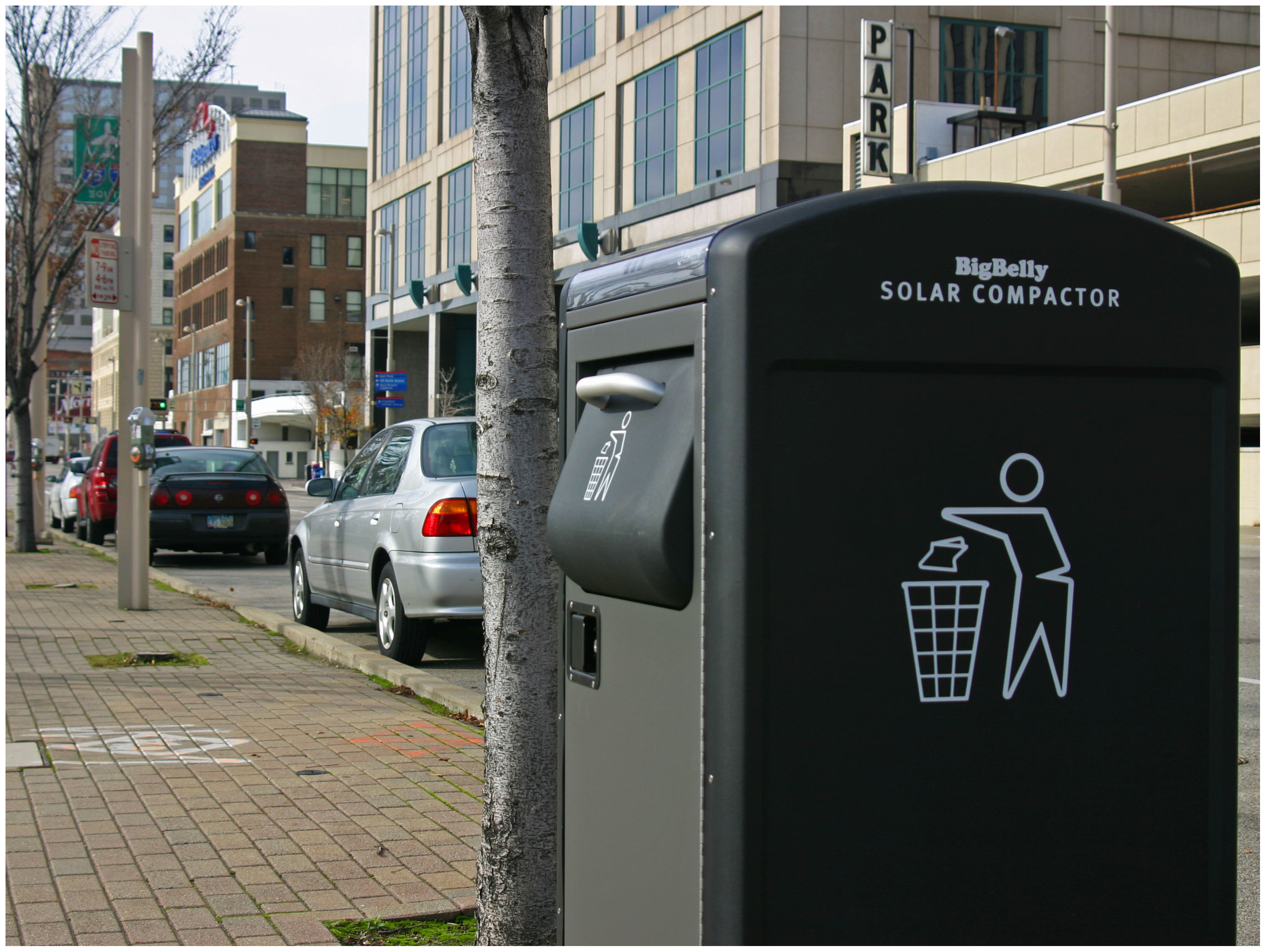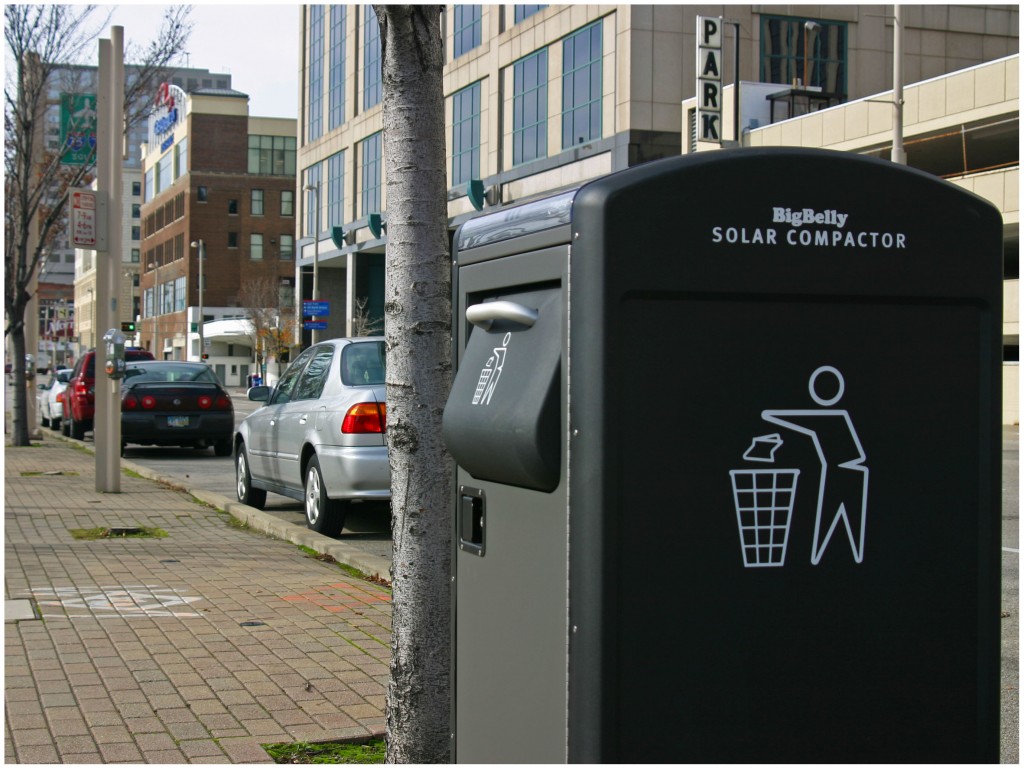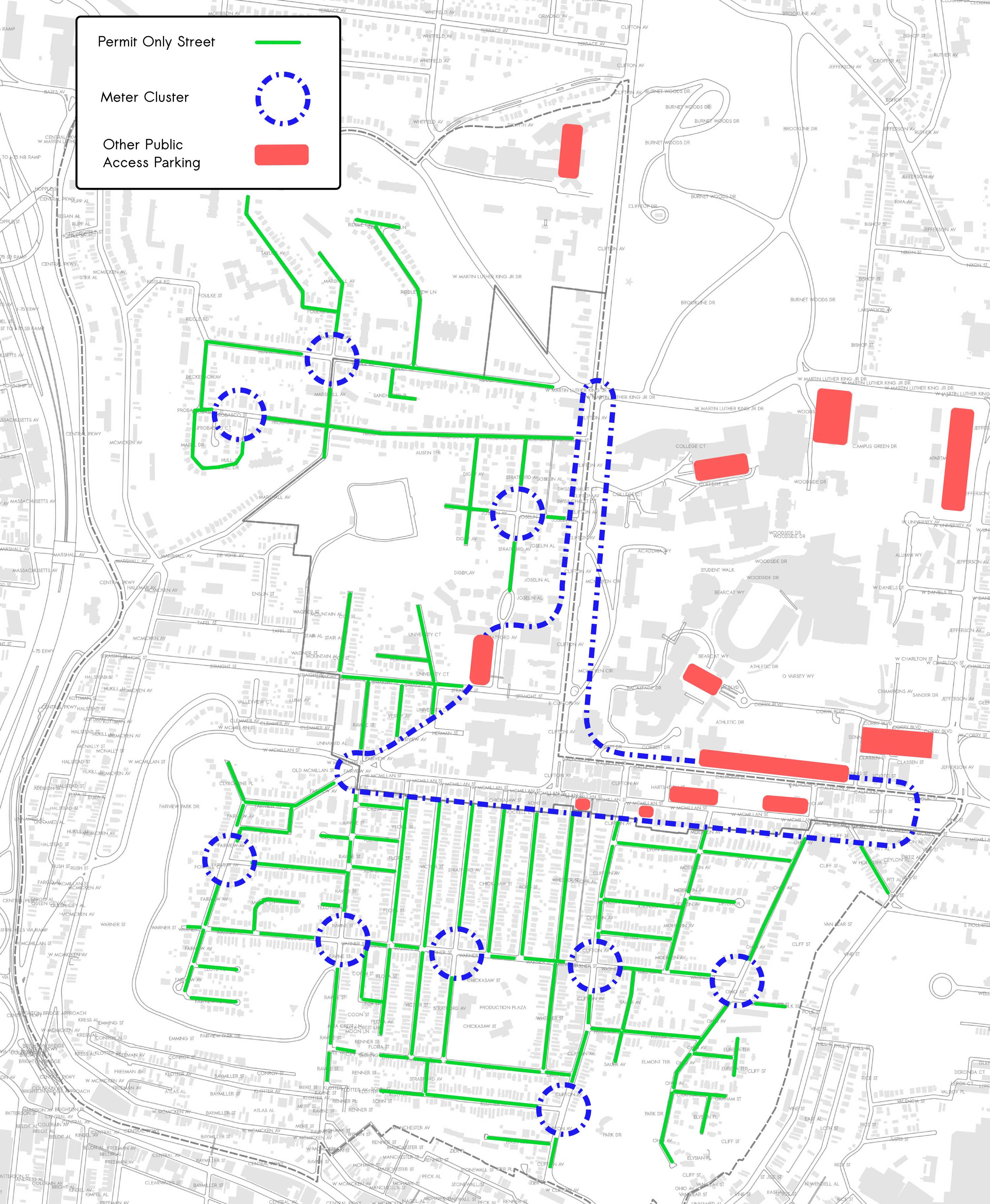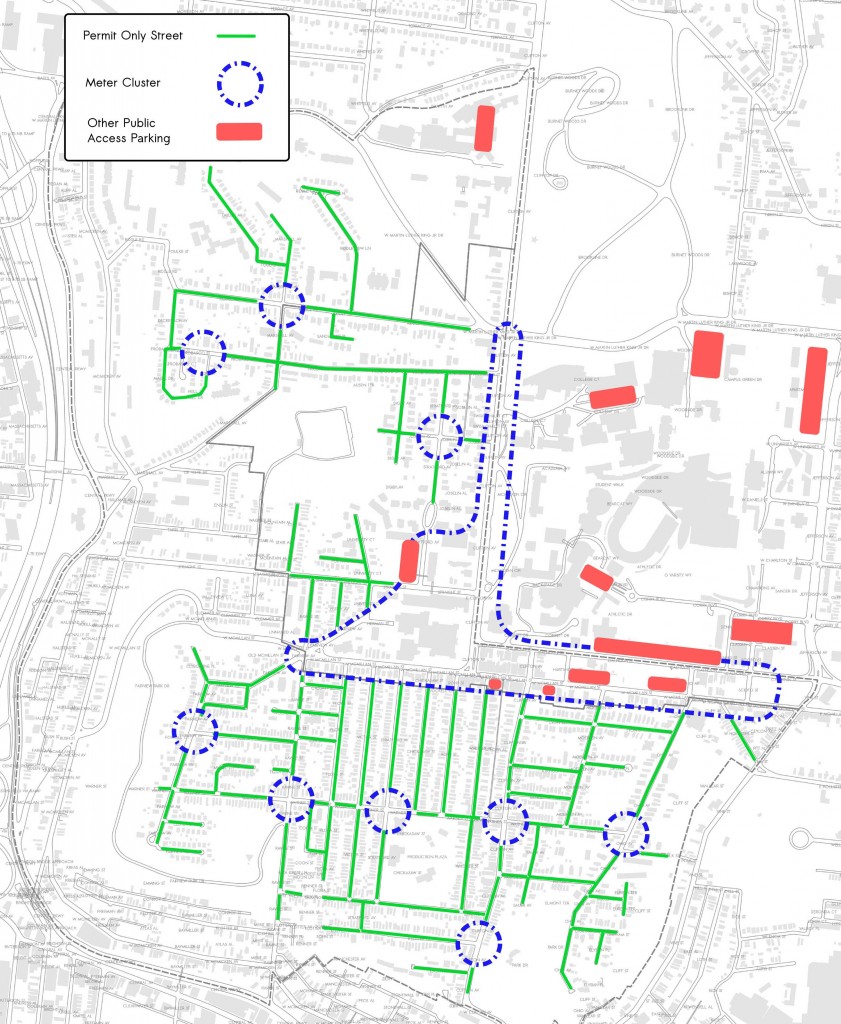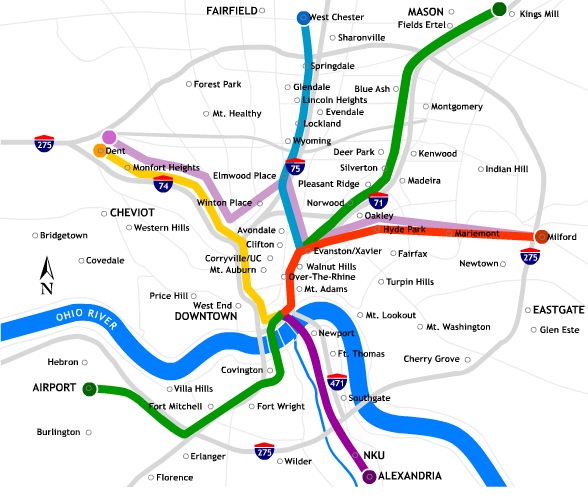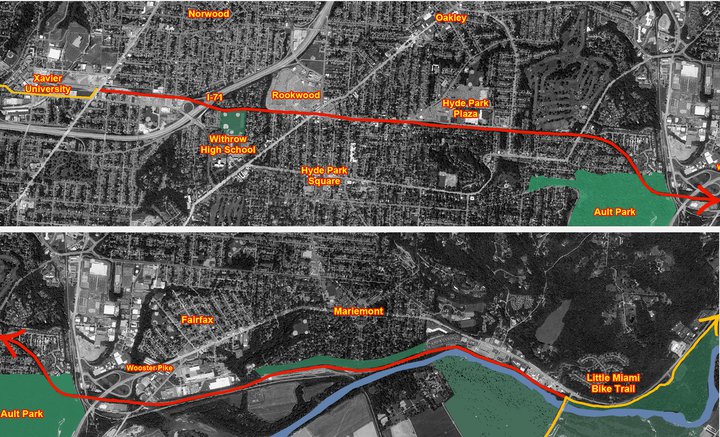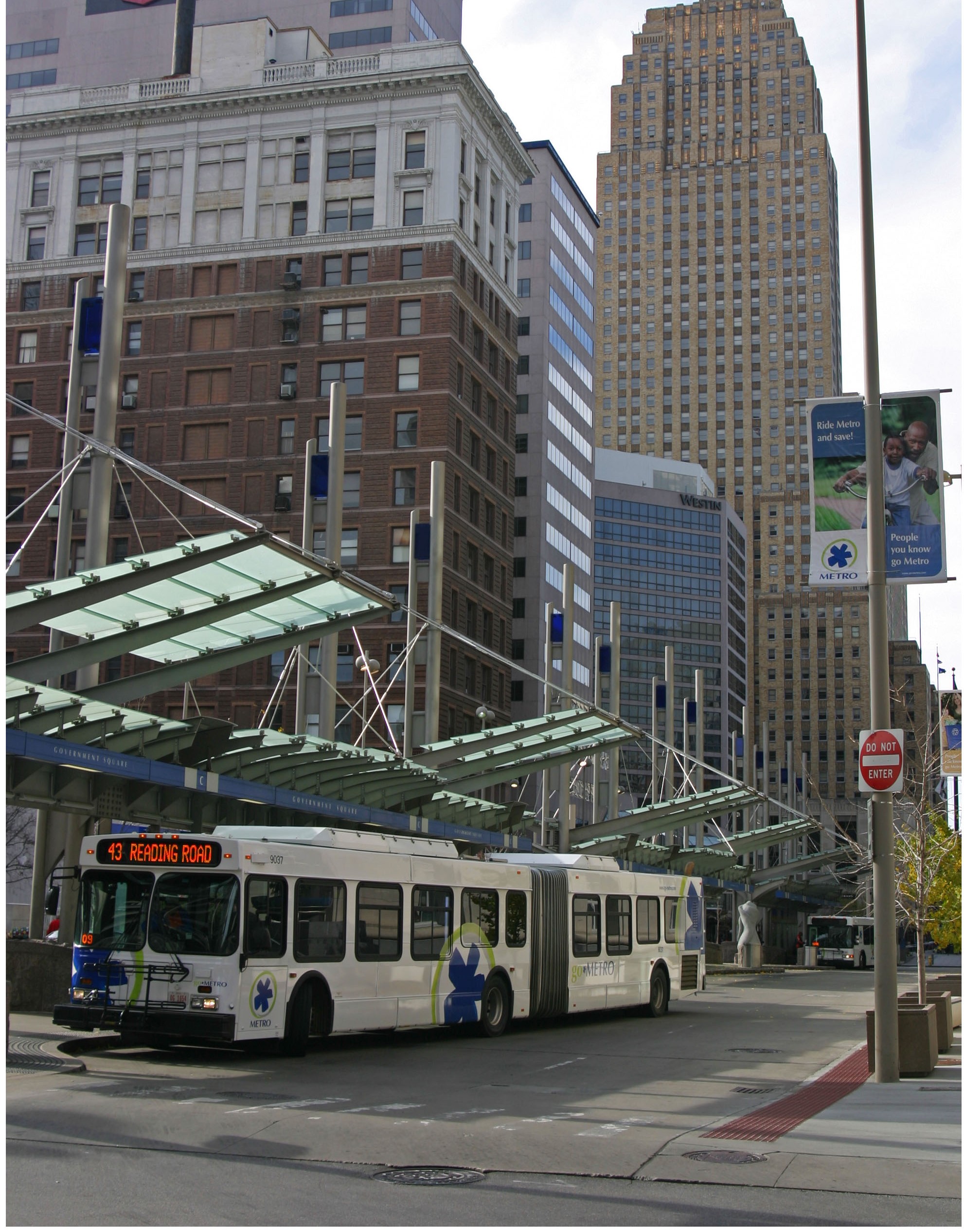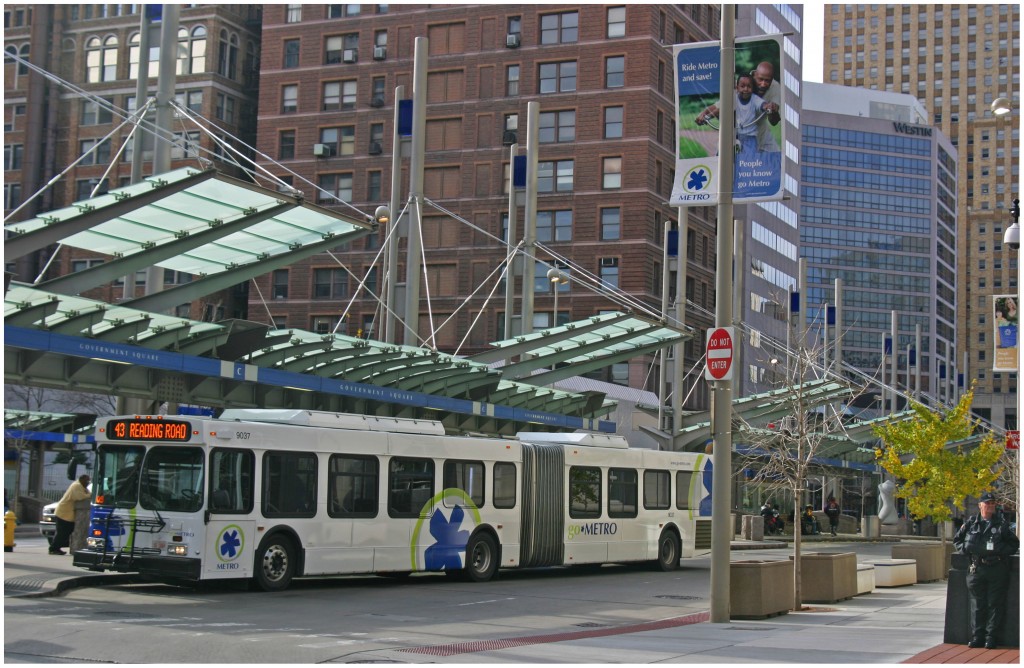Sixth Street’s Restaurant Row will soon have another eatery open to hungry downtowners. On March 17 the Silver Ladle will open its doors to the public, offering a variety of healthy, fast-casual food with friendly service and a fair price.
The Ladle serves up burgers, sandwiches, chili, soups and salads oriented for a variety of palates. Gluten-free, heart-healthy and veggie options are detailed on the menu.
The space itself, located next to Mr. Sushi in the 580 Building, is clean and bright without feeling sanitized or fluorescent. Modern light fixtures and blond laminate tabletops make for a pleasant experience. The kitchen is open-air and it is easy to see the crew prepping meals.

Exterior of Silver Ladle photograph by Jenny Kessler for UrbanCincy.
UrbanCincy took the opportunity to sample two offerings on the menu: Italian Wedding Soup and the Stuffed Mushroom Burger. The soup was full of mini meatballs and noodles, satisfyingly salty and pretty delicious. For those who might be trying to relive Stuffed on Vine’s glorious filled burgers, steel yourselves for a letdown. The burger is good, but not the same.
The burger is a step up from fast food restaurants but still prepared in a similar manner. The ‘stuffing’ is a welcome layer of bacon and chive cheese spread between two patties, which adds a much appreciated flavor and fat to the sandwich. The honey Kaiser roll the burger is served on is positively fantastic- buttered and griddled, it contains the fillings nicely. There are a variety of burgers to choose from if mushrooms aren’t your thing, and there are other sandwiches including a delicious looking muffuletta. Be aware, it costs extra to add sides to your meal, but the fries are worth it.
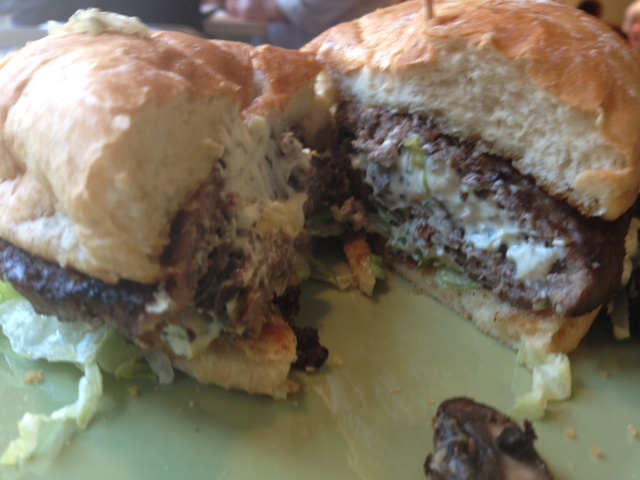
Silver Ladle Burger photograph by Jenny Kessler for UrbanCincy.
The most interesting portion of the menu is the chili – no surprise, coming from the Lambrindes lineage of Cincinnati chili parlors. Pick between several bases – burrito, fries, greens, spaghetti and coney- pick your chili – beef or chicken, both spiced Cincinnati style. Top it off with cheddar cheese, onions, jalapeños, black bean soup or sour cream. Vegetarians could forgo the meat and top with black beans instead. We’ll let the experts review the coneys, but others eating said the taste was very similar to Skyline.
One of the owners, Tim Lambrindes, is ecstatic to have his first restaurant open in downtown Cincinnati. “I’m from the Bridgetown area originally, and when we wanted to open this restaurant, we looked in West Chester and other suburban areas,” he explained.
“I worked with CJ Judge when trying to decide on a location, and he said, you gotta check out the downtown market. Being from Western Hills, I didn’t know a lot about downtown. All of my thoughts were completely false – as soon as I came down and started studying the people coming in during the day – and even at night, in this area – I loved it.”
The biggest draw for Lambrindes with the downtown location was the built-in clientele. “My customers don’t have to commute by car to my restaurant,” he said. “So many people live and work down here, that even at night, they can just walk up and here we are.”
If you are looking for a meal downtown that won’t bust your wallet or your waistline, check this out. The Silver Ladle is open from 10am to 9:30 pm every day, and will open to the public on March 17.


